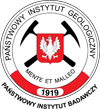The Triassic is the oldest period of the Mesozoic. The name derives from the Greek word triás, meaning "triad", used first in 1834 by a German geologist Friedrich von Alberti.
Paleogeography
In the Triassic, a single landmass, Pangea, dominated the global Panthalassa superocean. Pangea's central area sat around the equator, while its ends reached the poles. At the end of the period, Pangea's started to disintegrate.
Climate
With all landmasses connected, oceanic waters were freely exchanged between equatorial and polar regions. As a consequence, the average temperatures at the poles were much higher, preventing the formation of extensive ice caps as seen today. The centre of Pangea was hot and dry.
Life on Earth
Life in the sea
Planktonic and nektonic organisms evolved rapidly in marine environments, especially cephalopods such as ammonites and belemnites. Simultaneously, reef-forming organisms vanished in a so-called "Triassic reef gap" interval.
Marine vertebrates
Not many groups of fishes survived the Permian extinction, so during the Triassic, the existing species weren't the most diverse. The seas were also inhabited by marine reptiles, including sauropterygians, which include nothosaurs, placodonts, plesiosaurs, and ichthyosaurs.
Giant amphibians
The early Triassic river and lake environments were dominated by amphibians. Some reached giant proportions, such as Mastodonsaurus, which could reach up to 4 to 6 metres in length. Metoposaurus from Krasiejów, near Opole, was two metres long. Some amphibians evolved to tolerate colder conditions and settled in the temperate forests of Antarctica. Most of them disappeared by the Middle Triassic, outcompeted from their niches by crocodilian ancestors.
Archosaurs and the first dinosaurs
The hot and dry climate favoured reptiles, including archosaurs, which diversified rapidly in the early Triassic, including pseudosuchians, ancestors of crocodiles, and the group from which dinosaurs, birds and pterosaurs originated. Dinosaurs likely made their first appearance in the Middle Triassic.
Synapsids and the first mammals
The ancestors of mammals (known as synapsids) were badly hit by the Permian extinction. Only a few lineages survived until the Mesozoic, but even these did not last long. Among the survivors were cynodonts, which evolved rapidly in the Triassic and gave rise to modern mammals.
Plants
The terrestrial landscape was dominated by gymnosperms, especially conifers. Ginkgo biloba, cycads, and bennettitales were common. At the end of the Triassic, ferns became a rarity.
Mass extinction
The Triassic concluded with a mass extinction that hit both marine and terrestrial life. In the seas, all conodonts went extinct, as did all goniatites of the ammonite clade, as well as other groups. On land, mammalian relatives and many archosaurs also died off.
Do you know...
In the early Triassic, temperatures in the tropical regions were so high that very few organisms could survive there.
















